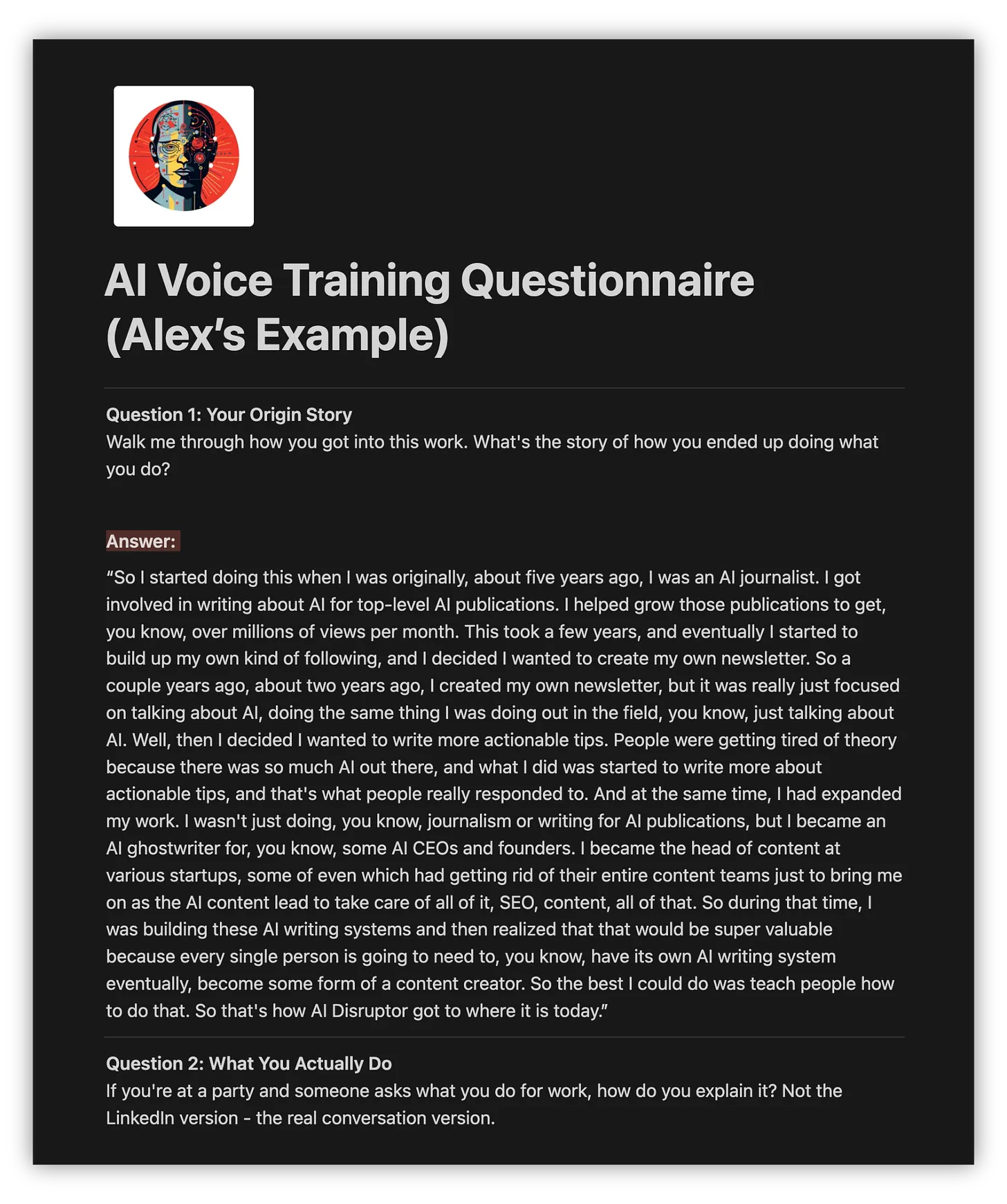This framework extracts your authentic voice for AI
From generic AI categories to your authentic voice in 20 minutes
Most users think they can train their AI voice with custom instructions.
They write something like "be conversational" and wonder why their AI still sounds like everyone else's.
Here's what they're missing: Your AI doesn't need just instructions. It needs examples.
And not just any examples—systematic, structured examples of how you actually think and communicate.
That's what we're building today.
The AI Voice Clone Blueprint (your progress)
☑️ Day 1: Build an AI that sounds uniquely like you (intro)
📍 Day 2: This framework extracts your authentic voice for AI
🔜 Day 3: Your voice training is done—now watch it work with these 3 prompts
🔜 Day 4: Use your AI voice on ChatGPT, Claude, and Gemini
The custom instructions myth
I see this all the time:
Someone spends an hour crafting the "perfect" custom instructions. They write paragraphs about their tone, their audience, their industry. They hit save and feel accomplished.
Then they generate content and it sounds...fine at the best.
But it doesn't sound like them.
Think about it. When you write "conversational and professional with occasional humor," your AI essentially sorts you into:
Category A: Professional
Category B: Conversational
Category C: Uses humor
But human personality doesn't work in categories. Your voice is the unique combination of:
How you structure explanations
Your specific way of building arguments
The exact phrases you use when you're passionate about something
How you transition between ideas
Your particular brand of humor or seriousness
The way you handle disagreement or uncertainty
Custom instructions reduce infinite human complexity into maybe 5-10 broad categories.
So instead of sounding like you, your AI sounds like "Professional-Conversational-Humorous Person #47,293."
Everyone using similar custom instructions ends up in the same few buckets. That's why so much AI content feels familiar—because it is. It's all coming from the same handful of personality categories.
The problem isn't your instructions. The problem is you're giving your AI a rulebook instead of examples.
Think about it: How did you learn to write? Not by reading a list of rules about "voice" and "tone." You learned by reading thousands of examples and absorbing patterns.
Your AI works the same way.
The Voice DNA Method
This is the systematic approach I use to extract authentic voice patterns and turn them into something your AI can reference.
Voice DNA = the systematic extraction of your communication patterns from structured examples.
Not random blog posts. Not generic writing samples. Structured responses that capture how you actually think, communicate, and approach problems.
Here's how it works:
→ Step 1: Complete the voice questionnaire (the right way)
First, you need to complete the 12-question voice training questionnaire if you haven't already. (Included at the bottom of this newsletter as well)
But here's the critical part: Use voice dictation for this.
Don't type your responses. Speak them.
Why? Because the Voice DNA Method is designed to extract how you naturally communicate, not how you think you should write.
When you speak your responses, you capture:
Your natural rhythm and flow
How you actually explain things
Your authentic personality patterns
The way you really think through problems
→ Step 2: Extract your Voice DNA
Once you have your questionnaire responses, you'll use this exact prompt to transform them into a comprehensive Tone of Voice document:
[The Voice DNA Extraction Prompt ↓]







